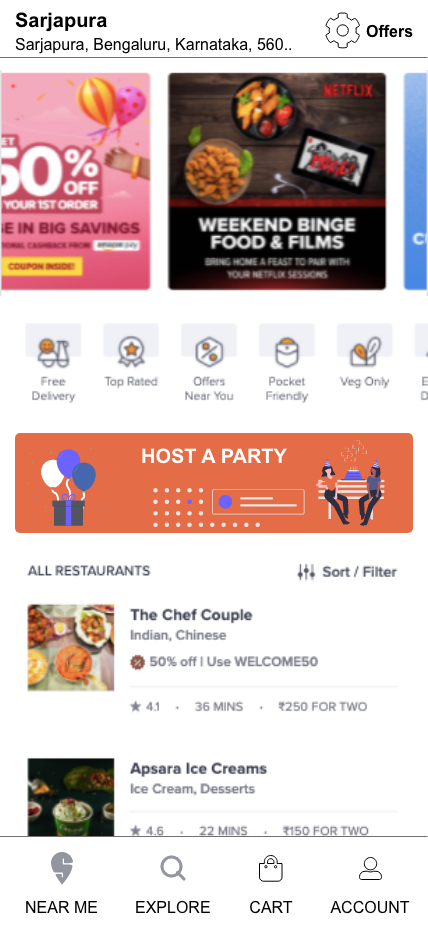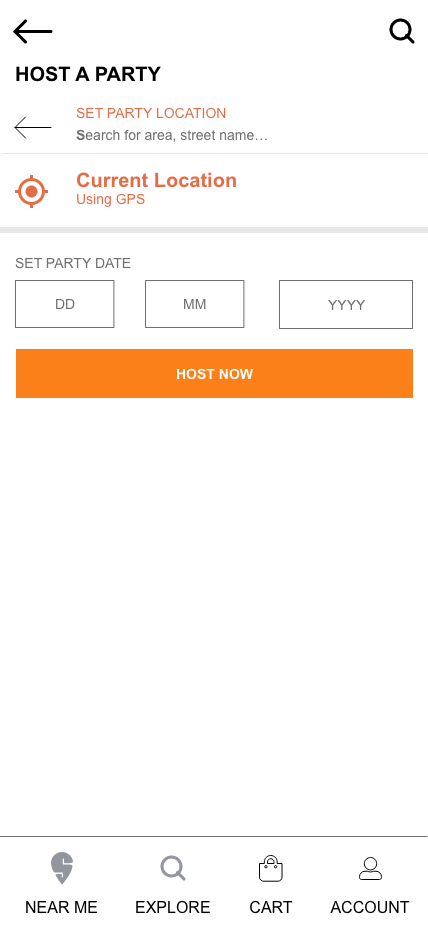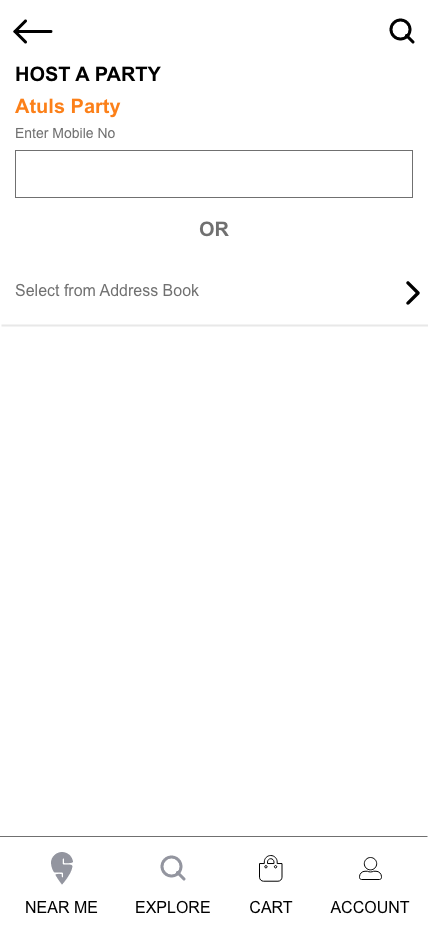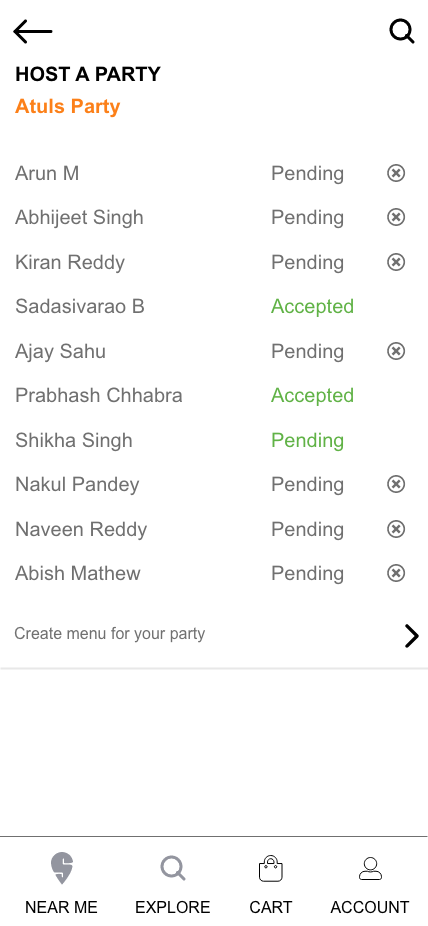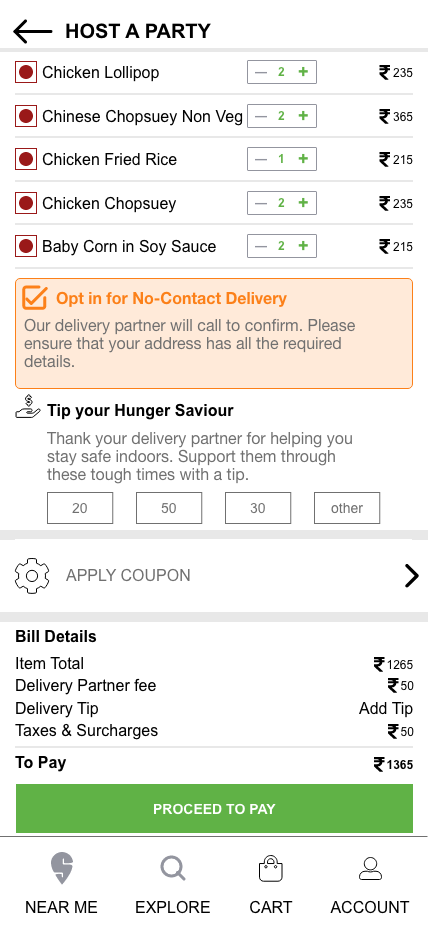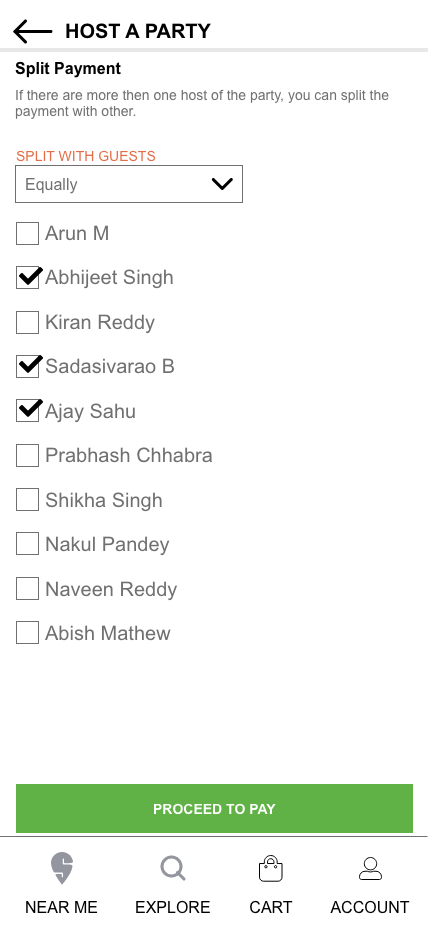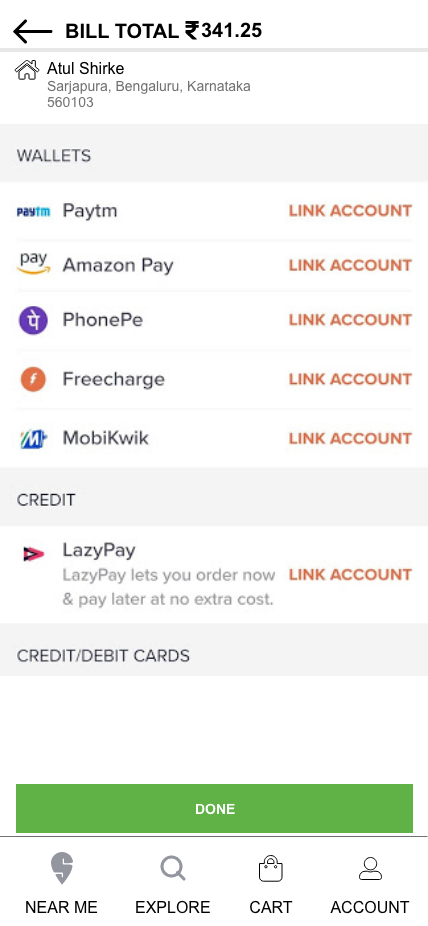
Case Study - Swiggy Group Order
2021
Overview
- Swiggy is one of the leading food ordering apps in India is planning for a new feature
- We have noticed an increase in orders, especially during Friday evenings
- This inspired us to come up with a group order feature for users who would like to host a party at their place
- There will be a host and there will be guests.
- The host will select the location where the party will be hosted and send invitation to the guests
- The host will create a party menu on the app and share the menu with the guests.
- Guests too can edit the menu but only after accepting the invitation
- Once the menu is finalized, the host can make the payment
- The host can also split the payments between him and the guests.
- Food will be delivered to the party location on the designated day.
My Role
This was a design exercise that was assigned to me by a design agency. I did everything, from Requirement gathering, Stakeholder interview, User Research, User Profiling, Creating User Persona, Task Profiling to finally creating the design using Adobe Xd.
Problem Statement
- Define the user experience of group order features for Swiggy
- Envision both host and invitee experience
- Create a seamless Experience so that user does not realize the addition of new feature into their existing app.
Assumptions
The Product Owner and I made few decisions to start with. we decided that we will keep our scope only to 3-4 types of user-profiles and not overthink. we will identify the Primary User and build the initial iteration around him. we will detail out the list of features only around the Primary user. This new Group order will not be a standalone functionality and should seamlessly merge into the existing Swiggy Ecosystem. We will not put any effort into the menu and Payment. And we will treat unidirectional flow both for Host and Guest users.
Research
I started my research with the requirement gathering session with stakeholders. I had a couple of calls with the product owner to better understand the requirement. Since I had no access to the users, I sent a questionnaire to the product owner to get insight into the user and understand the Product’s Primary User.
I did extensive competitor analysis. I also time deeply exploring Zomato, Uber Eats, Doordash to see if they have something like this in their product. Though I did not find any close match to what I was planning, I got a lot of ideas for my Group order thing.
Once the users were identified and the primary user was finalized, I moved to detail out the list of tasks. I documented all the identify tasks in an excel sheet and discussed them with various stakeholders. After few iterations on the task list, user expectations, and product functionality, we had something concrete in place. Once we had a consensus on a list of features or tasks, I documented them in Github and detailed them.
User Profiles
While working on this, I considered three Major User profiles
- Working Professional
- Housewives
- Students
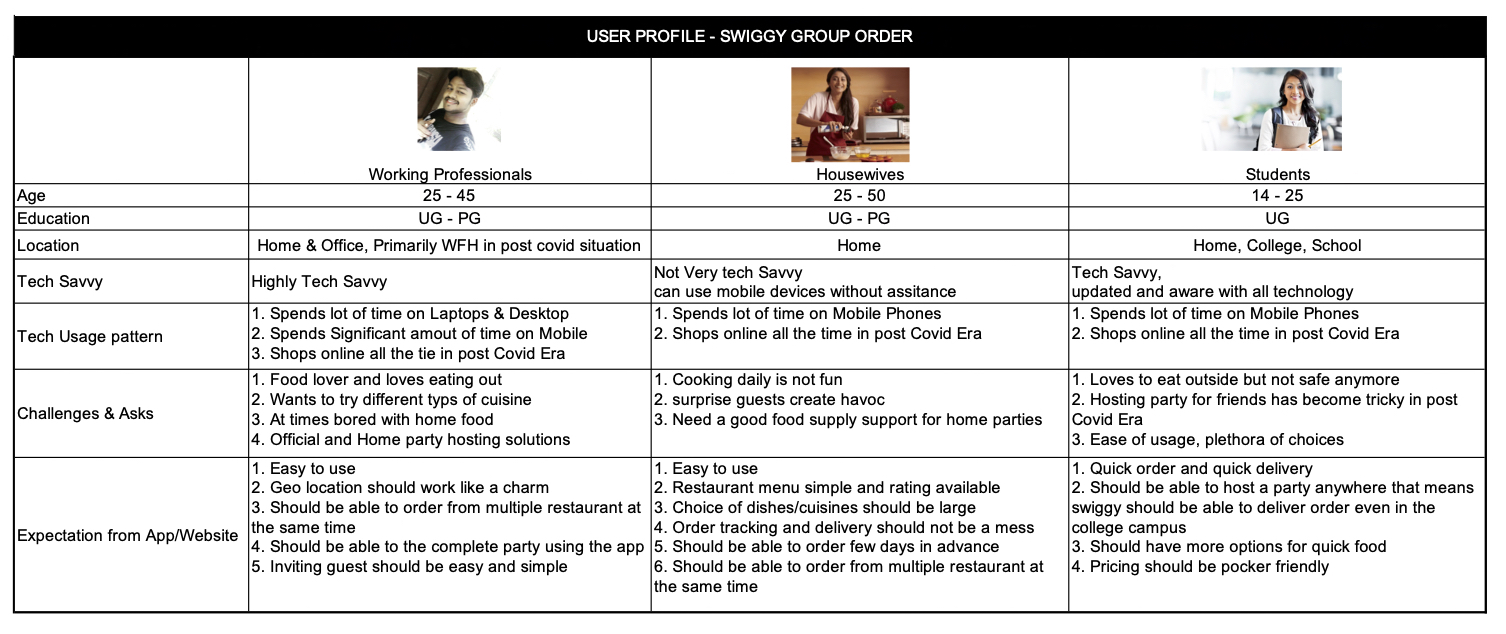
User Persona
Of the 3 user Profiles considered, we decided to target this application for Working Professional in the first design iteration. Hence we created the User Persona for Working Professional only. The Goal was to take a deep insight in his requirement, challenges, asks, behaviour and design the product around him. Initial Market Survey suggested that more then 60% of the user of this product would be Working Professionals.
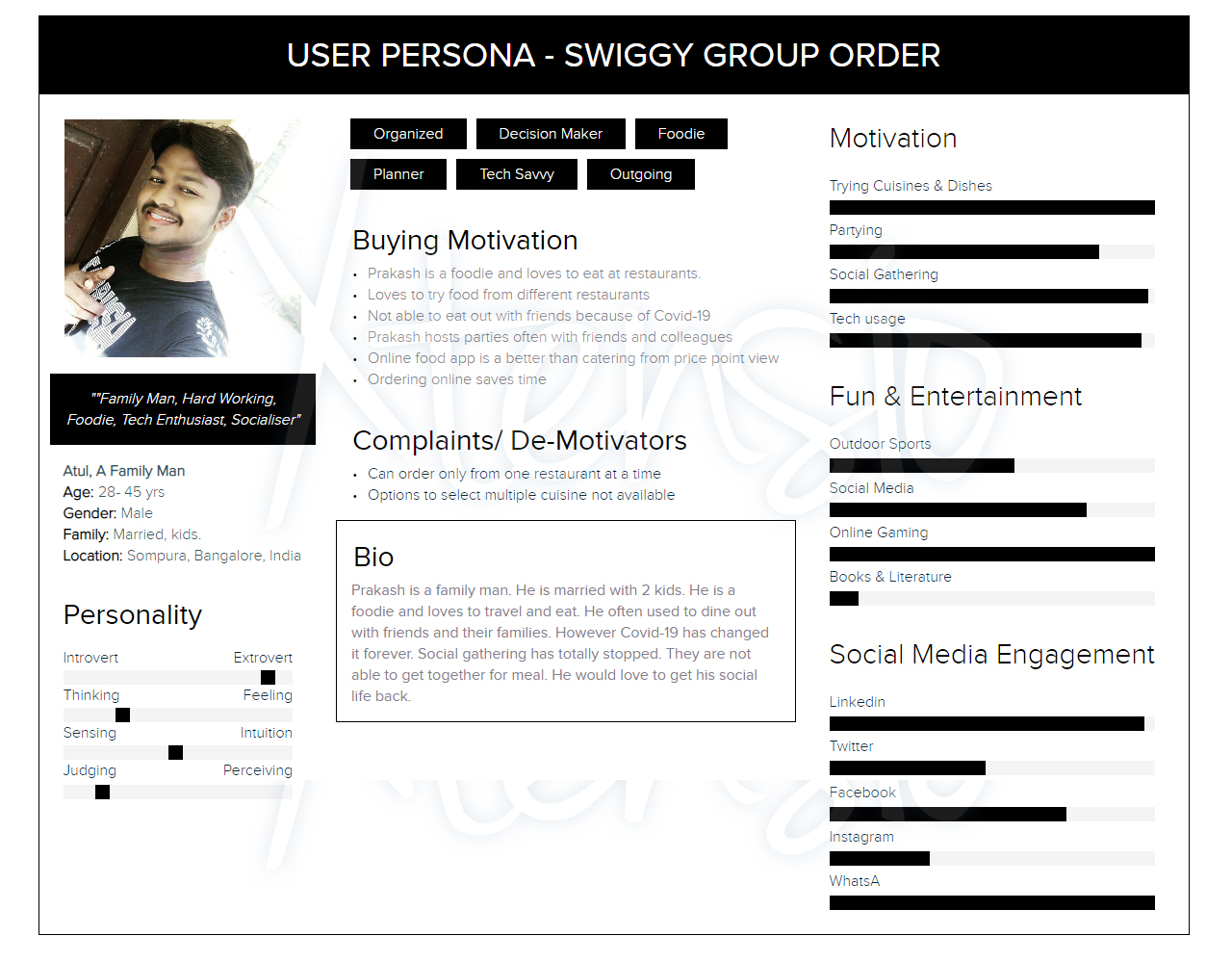
Task Profile
- Here is the list of task that has been identified for this Case Study.
- All the task has also been detailed out on Github.
- Task Profile
Tools Used
Discover
- Competitor Analysis
- User interview
- Market Research
- User Research
- User Profile
- User Persona
Define
- Business Requirement Documentation
- Gitlab – Product Backlog
- Conceptdraw Mind Map – I.A
Design
- Pencil Evolus
- Adobe XD
Prototype: Host UI
Prototype: Guest UI
Lessons Learned
Swiggy group order was unique in many ways. At the peak of pandemic, working on this product line was a different ecosystem to deal in. Here are my top 5
- Even in post pandemic world, User Experience is still king. You need to talk to them.
- Think slow, User expectations could be different from your anticipation
- Remote interview in the pandemic world has new challenges. Understand well. Prepare better
- Even the most complex product should be designed to work simply.
- Loopback with the user after the interview
Final Words
Swiggy Group order was an interesting project to work on. it started with a very thorough understanding of the user. In the absence of actual users, I had multiple calls with the product owner. Requirement gathering and finalization of the requirement were very interesting. It led to many heated discussions but in the end, we all agreed on what we want and how we wanted to build. The whole exercise was completed in a week’s time. I spend 3 to 4 hours daily working on this project. There are multiple iterations of requirements, user profiles and personas, low fidelity prototypes, and design.
